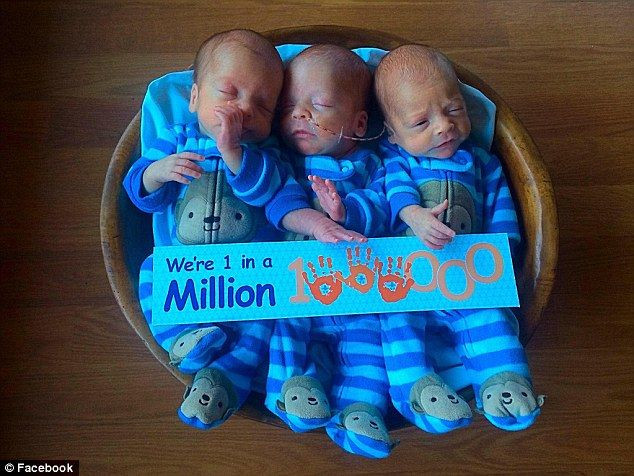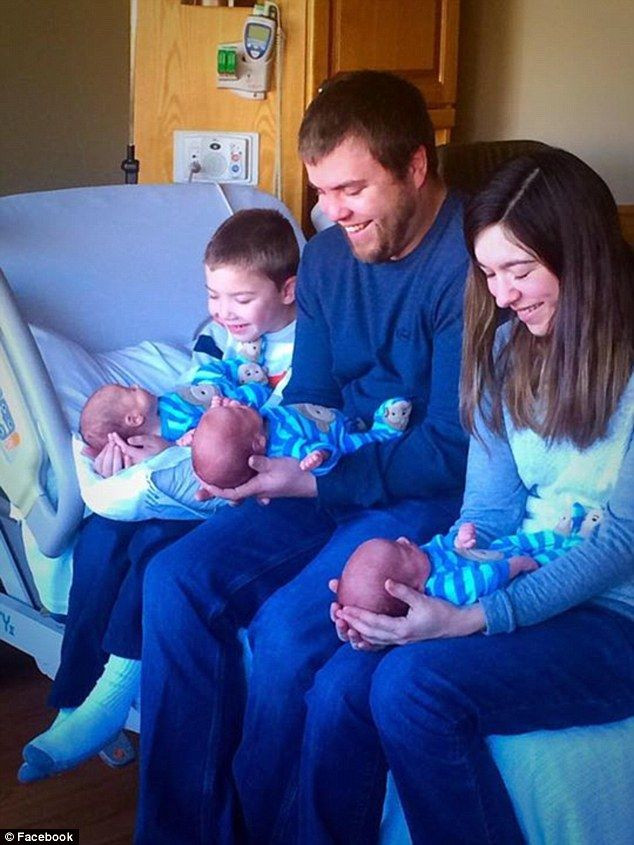Doctor Calls Identical Triplets 'One In A Million': The Science Of Triplets

Identical triplets that develop without fertility treatments are so rare, the doctor that delivered the Kinsey twins last month called their odds “one in a million.” The three healthy baby boys were born to 30-year-old mother Jody Kinsey of Miles City, Mont., and are expected to be released from the hospital soon.
“My dad's a multiple,” the 29-year-old father Jase Kinsey told the Billings Gazette. “I just kind of had that feeling that it would get me sooner or later.” Many people have heard twins skip a generation, and Jase thought the same thing. But his father had nothing to do with these million-to-one odds.

There is only one genetic factor that can explain why certain family lines tend to have more twins than others: hyperovulation. When a woman releases multiple eggs during ovulation, it increases the chance of conceiving fraternal twins. However, only women can carry the odds for hyperovulation because women are the ones who ovulate, not men. If the mother’s side of the family carried the gene, it could only be passed down through the daughters in order for there to be an increase in odds, according to About Health.
Jase’s identical sons are a complete chance, and he’s already thinking of all the mischief they could get into. “They can scheme together and get it figured out to where, ‘OK, you're better at math, so you go to my math class, and you go to my math class, and I'll go to English, 'cause I'm better at English,’” Jase said.
They will be able to enjoy their rare opportunities to fool others, since Cade, Ian, and Milo were all born healthy at 32 weeks. Even though the first born was placed in the intensive care unit, it is not unusual to place a twin or triplet there until his breathing and heartrate remains stable. Being born as identical triplets means their mother’s egg was divided evenly into three parts. A non-identical fraternal twin or triplet, is more common because they are born from their own egg but have been fertilized at the same time and share a womb.
“To have a patient with spontaneous identical triplets is incredibly rare,” said maternal fetal medicine physician Dr. Dana Damron, who works at the Billings Clinic where the triplets were delivered. “When you see a patient with triplets, you take a deep breath and realize all sorts of complications that can occur. But when it turns out well in the end, it’s one of the most amazing experiences.”
The triplet’s mother Jody is happy, healthy, and looking forward to bringing them back home to their 6-year-old big brother Jax. “It’ll be nice to get them all home and get a routine figured out,” she said.
Published by Medicaldaily.com



























